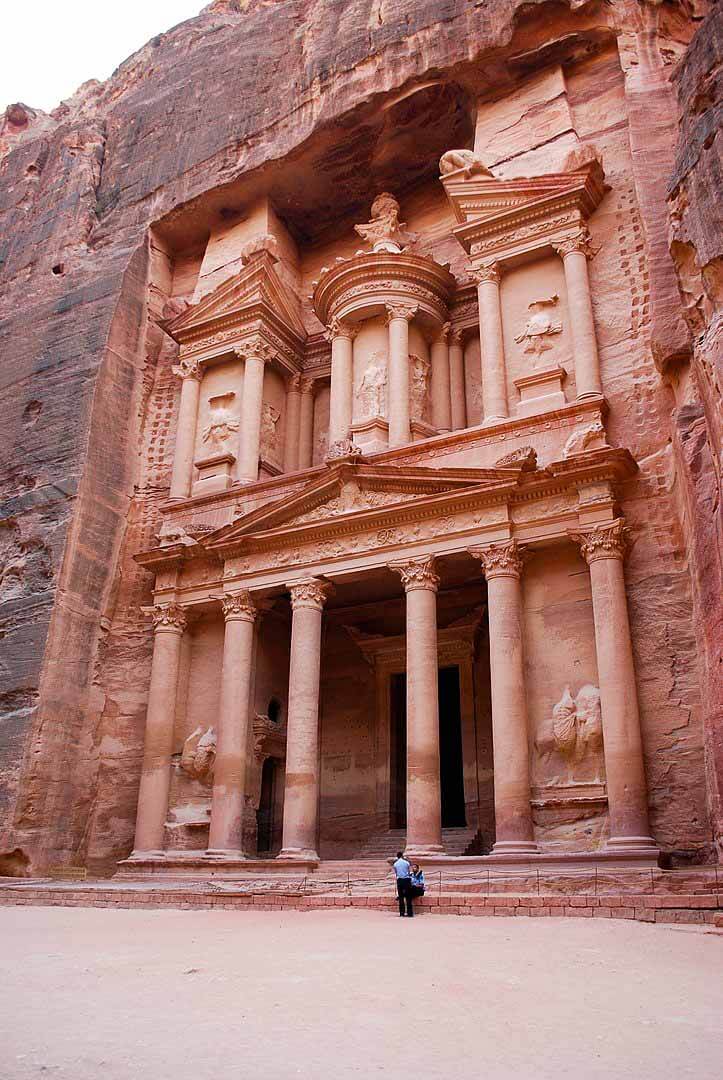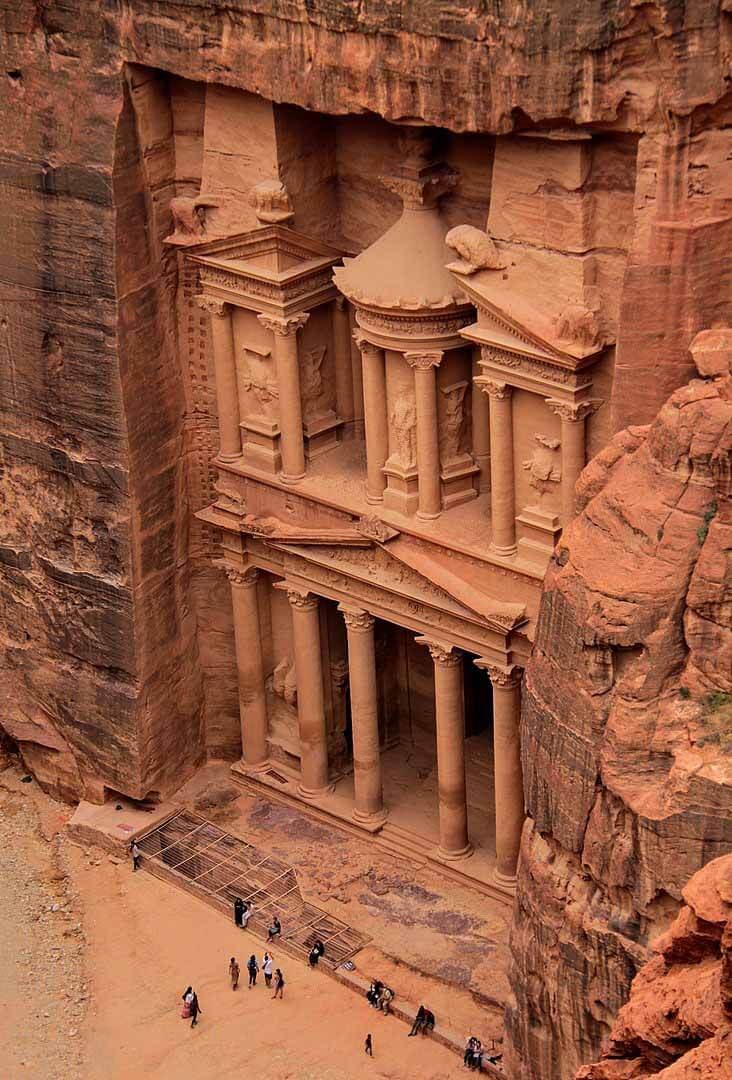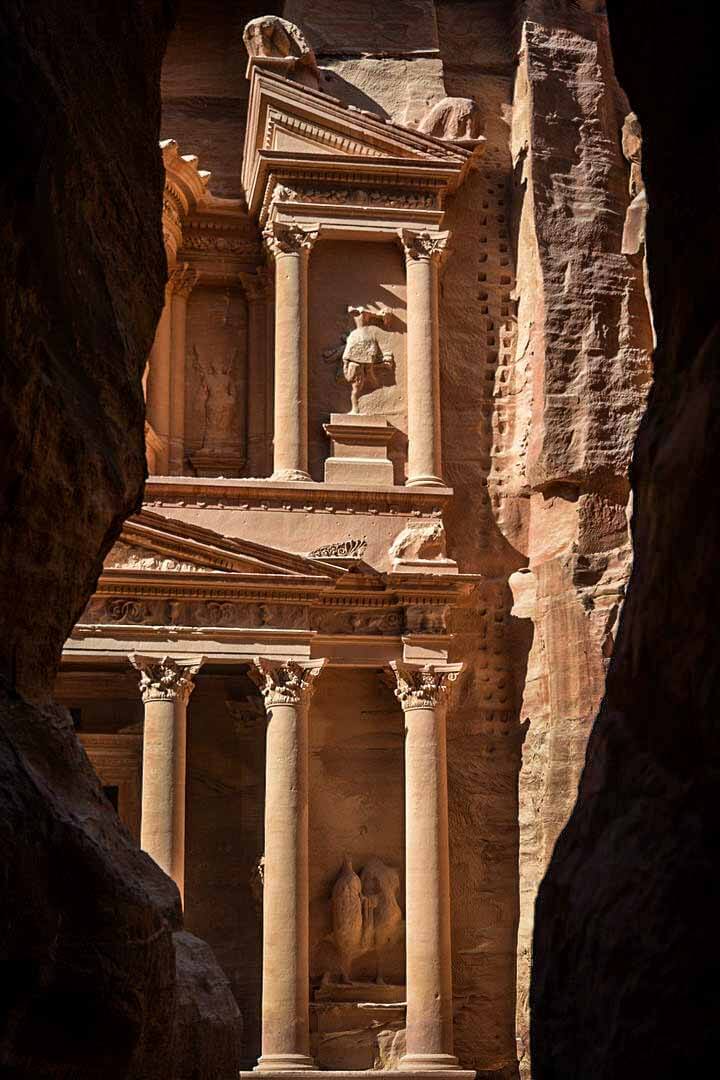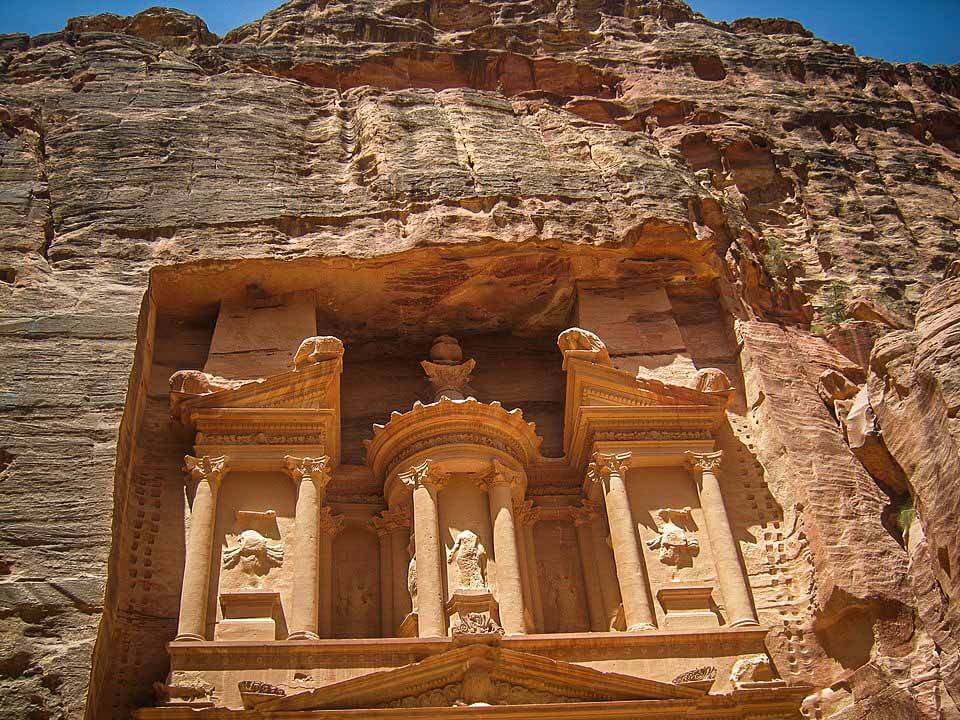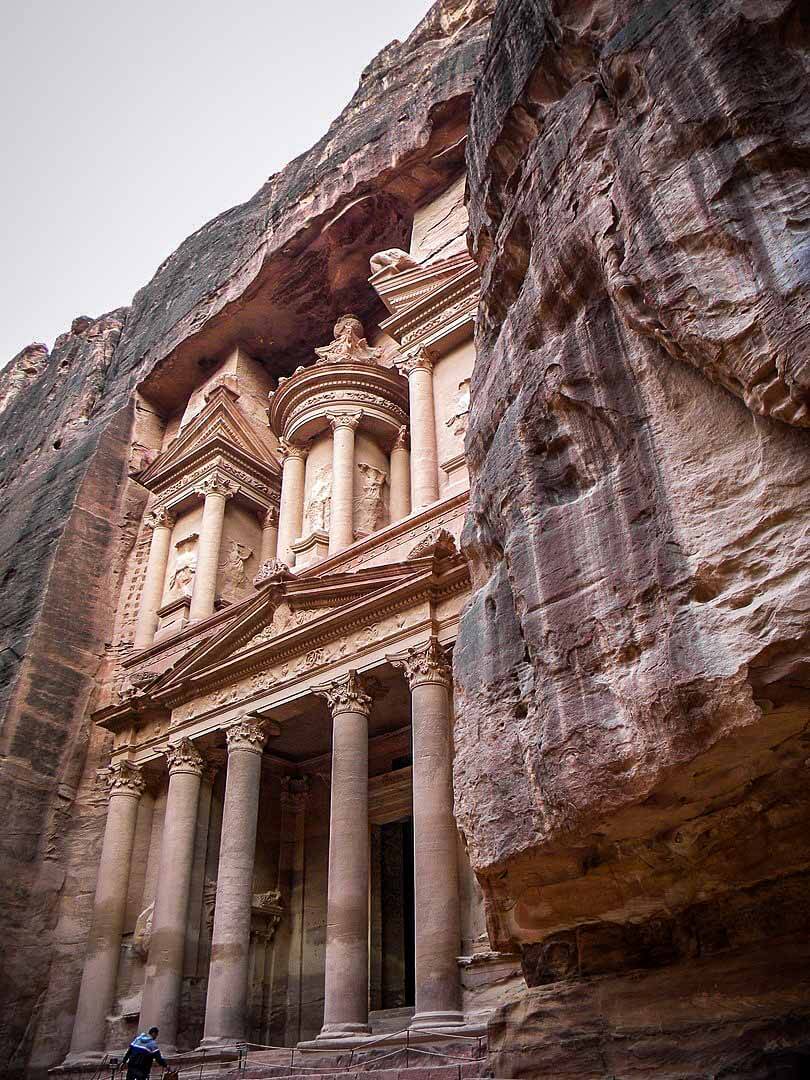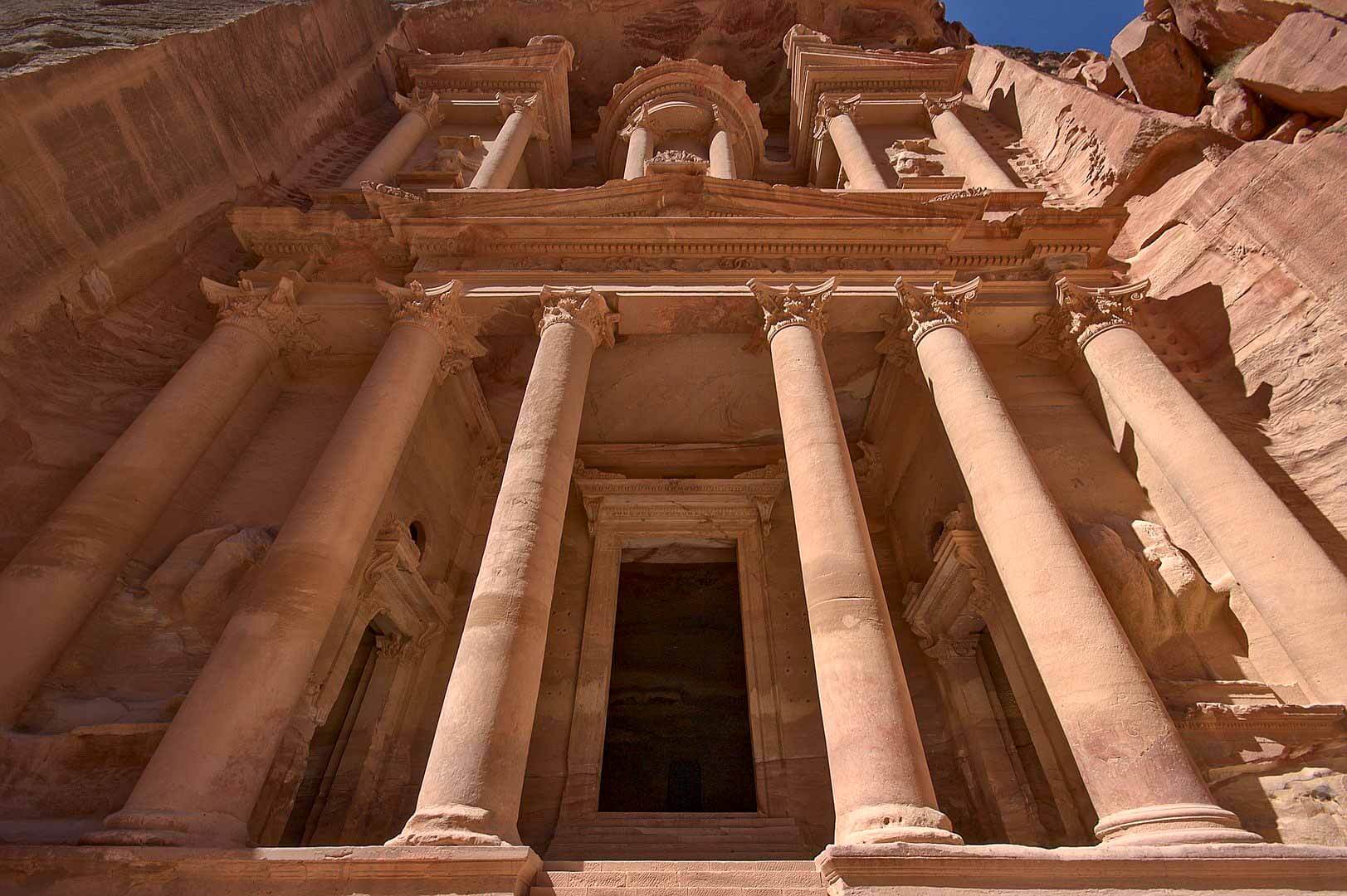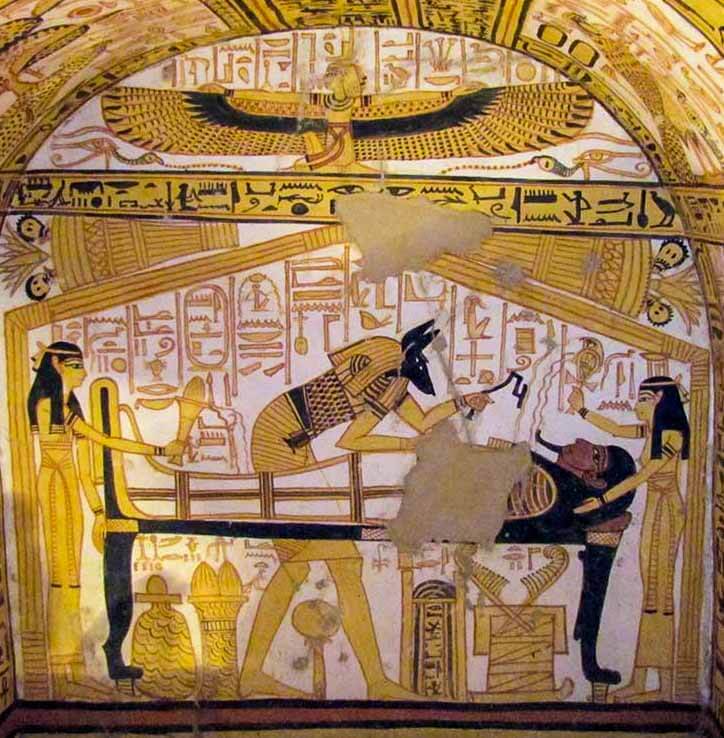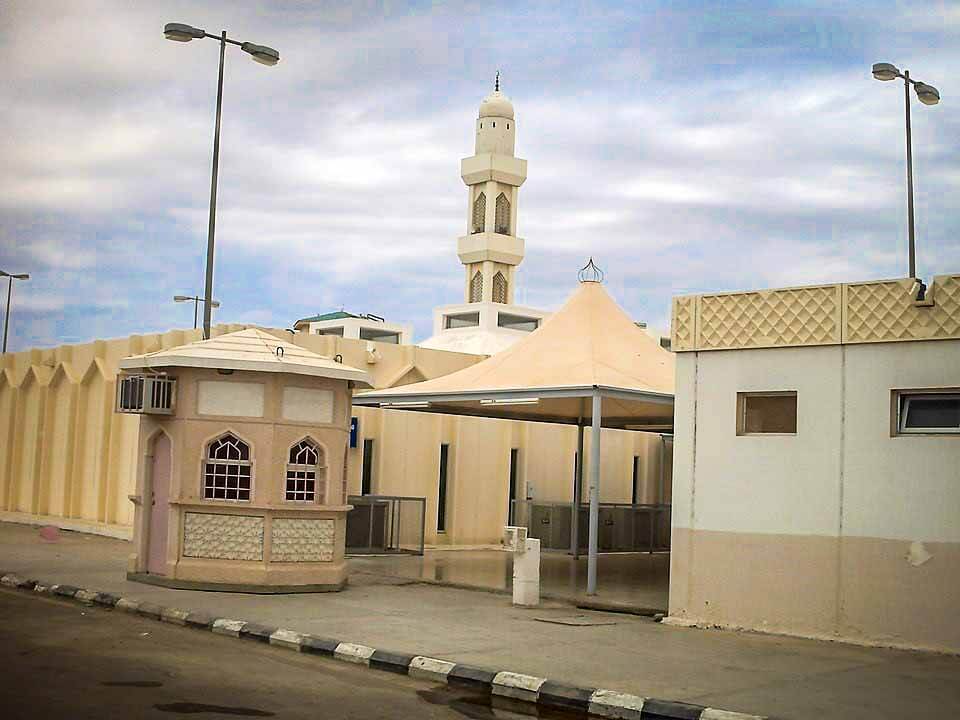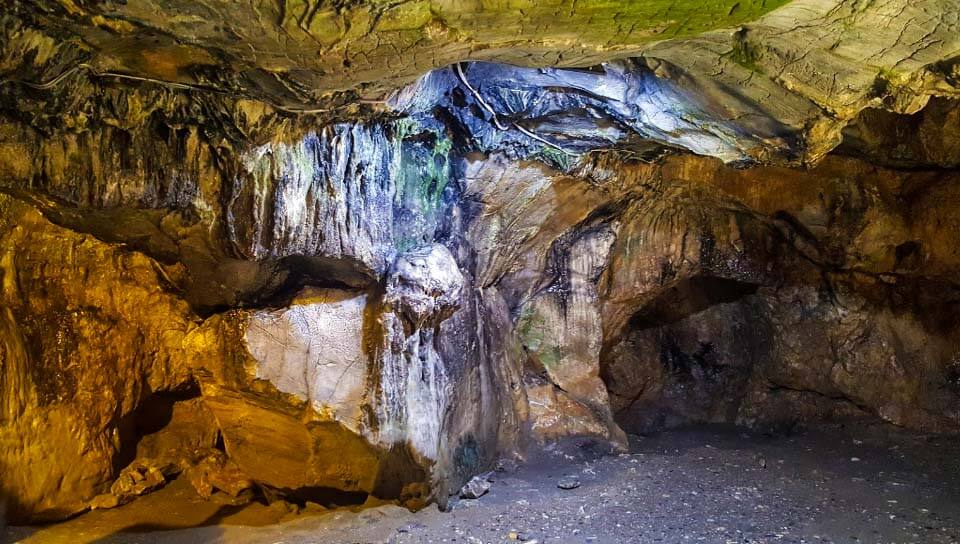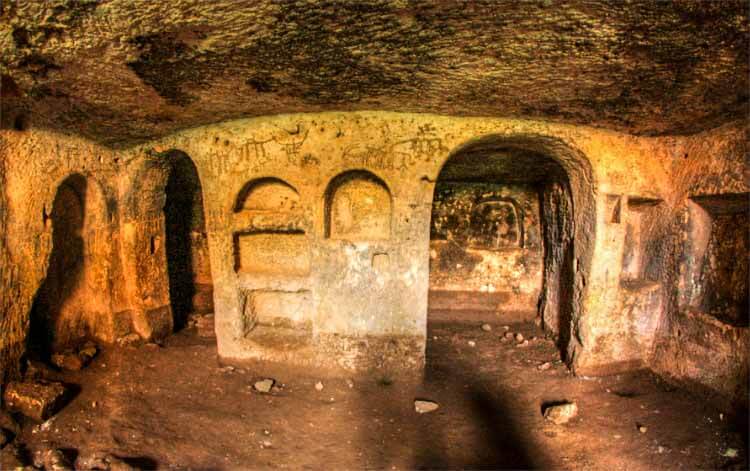Petra, Jordan
Coordinates: 30.322026, 35.451481
The Treasury
Al-Khazneh is one of the most elaborate temples in Petra, a city of the Nabatean Kingdom inhabited by the Arabs in ancient times.
As with most of the other buildings in this ancient town, including the Monastery, this structure was carved out of a sandstone rock face.
It became known as “Al-Khazneh”, or The Treasury, in the early 19th century by the area’s Bedouins as they had believed it contained treasures.
This 1st century temple is cut into the sandstone rock face of a 130-ft cliff.
Name
One legend is that the Egyptian Pharaoh and some of his army escaped the closing of the Red Sea, created the Khazneh by magic as a safe place for his treasury and continued in his pursuit of Hz. Musa عليه اسلام. This led to the name Khaznet el-Far’oun, “Treasury of the Pharaoh”.
Another legend claims that bandits or pirates hid their loot in the urn. Significant damage from bullets can be seen on the urn, attributed by local lore to Bedouins who are said to have shot at the urn in the early 20th century, in hopes of breaking it open and spilling out the “treasure”.
Nabataeans
At its peak, the area under Nabataean influence stretched from modern-day Yemen to Damascus and from western Iraq into the Sinai Desert, at least, according to some historians.
No one is really sure how large their area of influence really was.
That is how elusive and mysterious the Nabataeans were. While their caravans traveled widely, it is hard to be certain of the borders of their political control or the extent of their travel.
The magnificent city of Petra is so impressive, that even today tourists stare in awe at the great ruins.
Yet, this impressive city was hidden away in a cleft in the rock with access through a narrow crack in a mountain.
The crack is over 1200 meters long and 3 to 6 meters wide, flanked by 100-meter high canyon walls.
Why hide a city? Moreover, why was it built in such a hurry, only a few short years before Christ walked on this earth?
Nabataeans Religion
The Nabataeans worshipped Arab gods and goddesses during the pre-Islamic era as well as a few of their deified kings.
Dushara was the primary male god accompanied by his three female deities: Al-‘Uzza, Allat and Manat. Many statues carved in the rock depict these gods and goddesses.
A stele dedicated to Qos-Allah ‘Qos is Allah’ or ‘Qos the god’, by Qosmilk (melech – king) is found at Petra.
Nabataean inscriptions in Sinai and other places display widespread references to names including Allah, El and Allat (god and goddess), with regional references to al-Uzza, Baal and Manutu (Manat).
The word “Allah” was found means they were warned by Allah however they continued to worship gods besides Allah. So these are people who carved their homes in rock, were warned by Allah but they rejected the message and then vanished. However this was portrayed in the Quran 1400 before it was discovered.
[Quran 15:80-83] The people of the Rock also rejected the messengers. We gave them Our revelations, but they turned away from them. They used to carve homes in the mountains, feeling secure. But the Shout struck them in the morning. The people of the Rock, those who carved their homes in rocks, were warned but they rejected the message.
So the angels killed them with a shout which means their homes were not damaged. But this is exactly what we found in Petra, stone age city with people still carving their homes in rocks and were warned.
Site related to Hz. Musa عليه اسلام
According to Arab tradition, Petra is the spot where Hz. Musa عليه اسلام struck a rock with his staff and water came forth, and where Hz. Musa عليه اسلام brother, Hz. Harun عليه اسلام, is buried, at Mount Hor, known today as Jabal Haroun or Mount Aaron.
The Wadi Musa or “Wadi of Moses” is the Arab name for the narrow valley at the head of which Petra is sited.
A mountaintop shrine of Hz. Musa عليه اسلام sister Miriam was still shown to pilgrims at the time of Jerome in the 4th century, but its location has not been identified since.
Know This
Make sure you come early enough so you have the place relatively empty so you can enjoy because once the tour groups arrive you just want to run away. They open the gate at 6AM so feel free to come as early as possible.
There is a path to climb the rocks and get an aerial shot, facing the treasury, head right and head to the wall (not the one facing the treasury but the one on the side).
You will see a trail heading up and it is kind of easy climb but it not exactly a trail or path but the view is amazing
There is a place to buy drinks, tea, water and interestingly enough water costs 1JD and tea costs 2JD.



